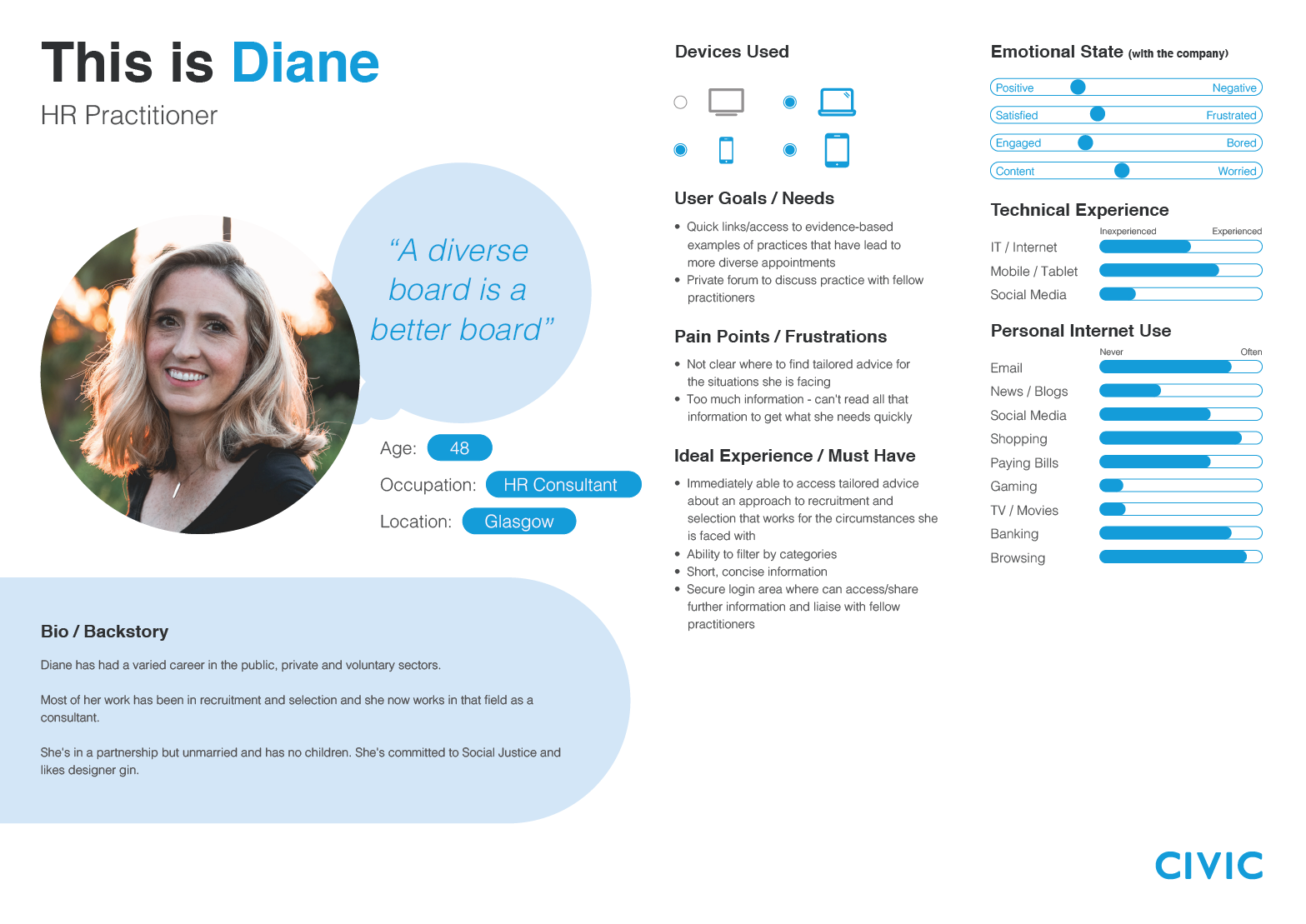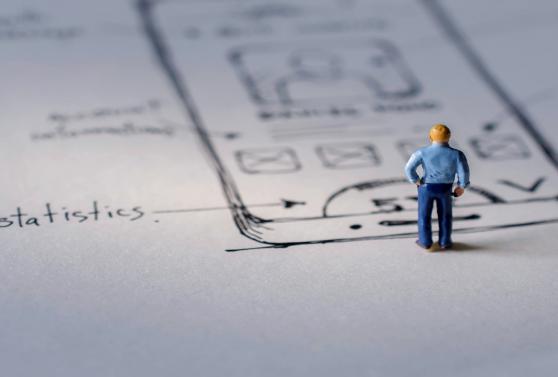Personas or persoNO?

Personas have been an essential design technique since the birth of UX, but there’s a lot of debate within the design community as to their usefulness, and whether or not we need to ditch these fantasy characters from our design process. Here’s why we recommend they stay!
What are personas?
A user persona is a document that presents a fictional representation of a user of a system or product. They are created based upon user research, providing context for project teams and typically contain:
- An image of the user
- Demographic information such as age, location, occupation
- History/experience of use of the system or product
- Key findings from the user research – needs, goals and frustrations
- What opportunities exist to solve the problem (ideal experience)

The great persona debate
One of the overarching issues surrounding personas is not with the personas themselves, but rather with the process in which they are created. It is often the case that personas are developed by one small team or even individual within an organisation, and often stakeholders are not involved in the process at all.
Because of this, clients may not be able to see the real value in this document; what is a persona, why they’re useful and how they can get the most from them. Personas help create actions that drive a project forward to create a truly user-centric end product.
Another major problem with personas, which fuels the ‘should we ditch personas?’ debate is that categorising user types can leave us at risk of stereotyping users and creating a lack of actual user representation.
A public sector example – the local council website
David is a resident within the local council, which happens to be an affluent area. As soon as we begin to develop David’s character; giving him a wife and two children, a high flying career and yes, you guessed it... a big house; we’ve failed, falling into the trap of stereotyping him. In doing so, we’re committing a pretty serious injustice in representing the general audience who fall under the ‘resident’ user type.
Within each user type, users have many different goals and needs and we NEED to take these into consideration to develop effective personas which are accurate in providing a more general picture of this user type, whilst also being specific enough to make the character feel real, relatable and evoke empathy within project teams. Empathy is the key behind Personas and UX in general. Without it, how can we expect to truly understand our users and design for them?
Why I think they are useful?
Despite their pitfalls, personas are useful. We’ve used them successfully across a number of projects where we often come up against a lot of resistance from stakeholders as to why they need UX, and why we do what we do.
Great UX comes down to two key factors; communication and collaboration. Each project should be treated as an education piece, getting stakeholders and project teams involved to help them understand WHY it’s important to really understand their users and ensure we are designing for them and not just who the client thinks their users are.
Creating personas with stakeholders, e.g. in co-design workshops, creates buy-in at an early stage and gets them thinking about their users. If they’re involved throughout the process, it engages them and evokes a deeper understanding as to how personas can actually be used, not just as a pretty picture pinned on their wall. It helps us turn the data we capture from the user research into something more easily digestible and actionable for the client.
Another reason why personas are great is that they help us build the user’s story, which we can use later on to develop customer journey maps, which in my opinion, is a key piece in exploring what our personas are actually doing, to eventually make improvements and hopefully figure out the ideal user experience.
In addition to engaging stakeholders, it’s also a great exercise to engage teams internally, bringing them together to align the vision for the project. It prevents us from working in silos and allows the UX team, designers and developers to collaborate and understand exactly what we are trying to achieve within the project, ensuring that we keep the user at the forefront of each decision we make.
What makes a good persona?
It is absolutely essential that personas are not just created by an individual or one team’s idea. They must be based on real, detailed user research which has been effectively analysed and understood by those developing them.
Don’t get carried away with how your personas look. Great design and a stock image is nothing if you don’t put a lot of thought into the actual content itself. They should focus on the user’s needs, goals and priority tasks, what frustrated them and what improvements we can make.
Remember that personas should not be used as an ego booster to validate what stakeholders or team members think or want. Use them to answer questions and solve the problem you’ve been tasked with addressing!
If you’re including demographic information, make sure it’s meaningful and relevant to the project, and try to avoid putting users into boxes and stereotyping. Think outside the box and remember to be inclusive.
Take a look at our discovery and UX services to see where we can help.



